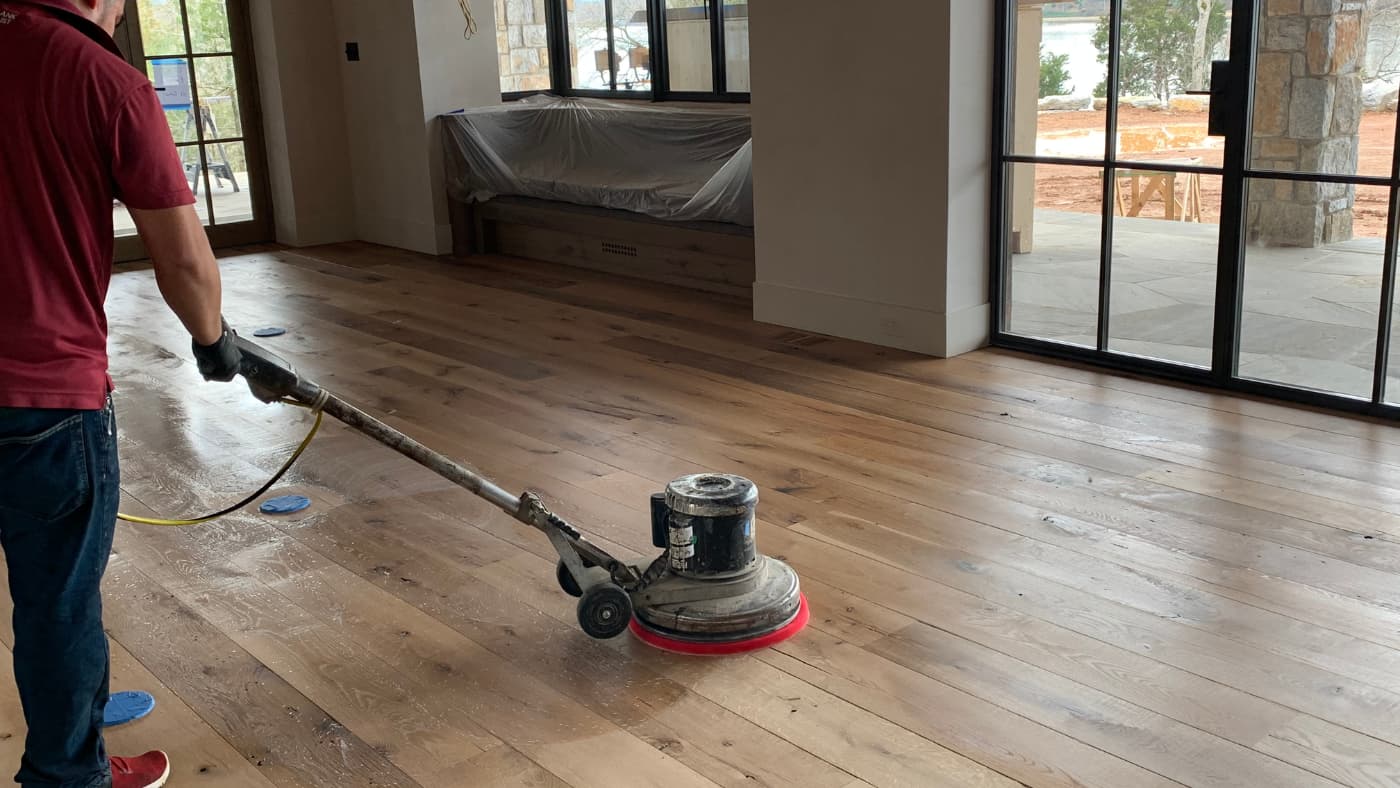How to Safeguard Your Wood Floor from Unsightly Scratches
Wood floors add a touch of elegance and warmth to any home, but they can be susceptible to scratches and dents over time. While it’s impossible to prevent every single mishap, there are several practical steps you can take to protect your wood floor and keep it looking its best for years to come. In this blog post, we’ll explore some effective strategies for safeguarding your wood floor from scratches.
1. Selecting the Right Finish:
The type of finish you choose for your wood floor can play a significant role in its resistance to scratches and overall durability and should be your first line of defense. There are various options available, each with its own advantages and considerations. Here are two of the ones we use most often:
Polyurethane Finish: Polyurethane finishes are popular for their excellent durability and resistance to scratches. They form a protective layer on top of the wood, shielding it from daily wear and tear. There are two types of polyurethane finishes: oil-based and water-based. Oil-based finishes offer a warmer, amber-toned appearance but require longer drying times and have a stronger odor. Water-based finishes dry faster, have low VOC emissions, and provide a clear, natural look.


Natural / European Oil Finish: Natural oil finishes are derived from plant-based oils, such as linseed or tung oil. They penetrate the wood and nourish it from within, enhancing its natural beauty. Natural oil finishes provide a low sheen or matte appearance and are more resistant to scratches compared to wax finishes. They are relatively easy to maintain, and small scratches can be spot-treated and repaired without the need for extensive refinishing. You can read more in our blog post titled “European Oil / Natural Oil Wood Finish”
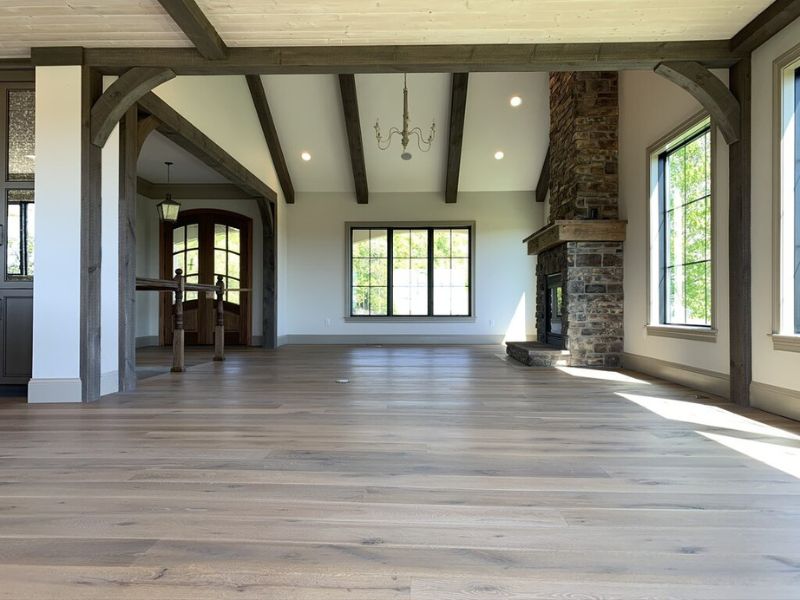

2. Use Protective Furniture Pads:
One of the leading causes of scratches on wood floors is furniture movement. Every time you slide a chair or table across the floor, it creates friction that can leave unsightly marks. To counter this, attach felt or rubber pads to the bottom of furniture legs. These pads act as a barrier, reducing the direct contact between the furniture and the floor and minimizing the risk of scratches.
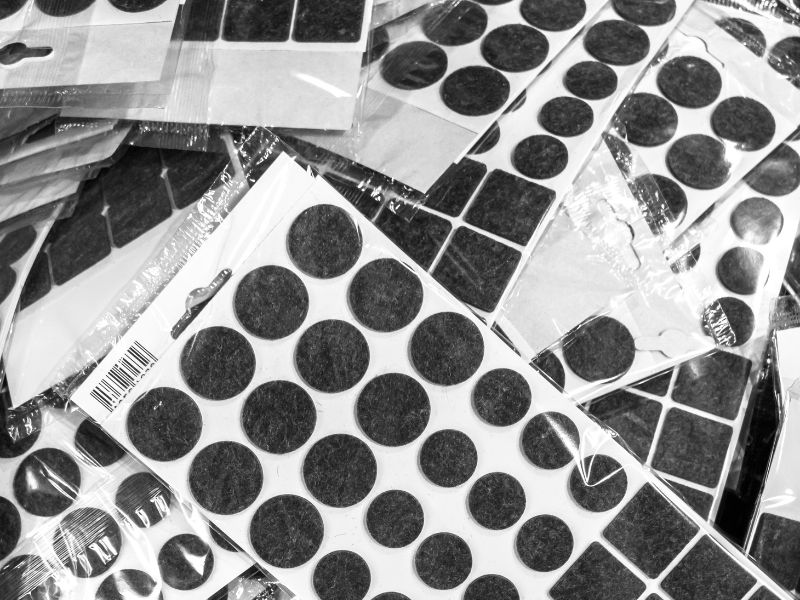

3. Invest in Area Rugs and Mats:
High-traffic areas, such as entryways, hallways, and living spaces, are prone to more wear and tear. Placing area rugs and mats in these areas can provide an extra layer of protection for your wood floor. These rugs not only enhance the aesthetic appeal of the room but also act as a cushion against heavy foot traffic. Make sure to choose rugs with non-slip backings to prevent accidental slips and falls.


4. Implement a "No Shoes" Policy:
Shoes, particularly those with hard soles or sharp heels, can easily scratch and dent wood floors. Consider implementing a “no shoes” policy inside your home to reduce the risk of damage. Encourage family members and guests to remove their shoes at the entrance and provide a shoe rack or designated area for storing footwear. Not only will this help protect your wood floor, but it will also keep your home cleaner.


5. Regular Cleaning and Maintenance:
Dirt, dust, and small particles can act like sandpaper on your wood floor, gradually causing scratches. Establish a regular cleaning routine that involves sweeping or vacuuming the floor to remove any debris. Additionally, mop the floor using a damp, not wet, cloth or a recommended wood floor cleaner. Avoid using abrasive cleaning tools or harsh chemicals, as they can damage the floor’s protective finish.
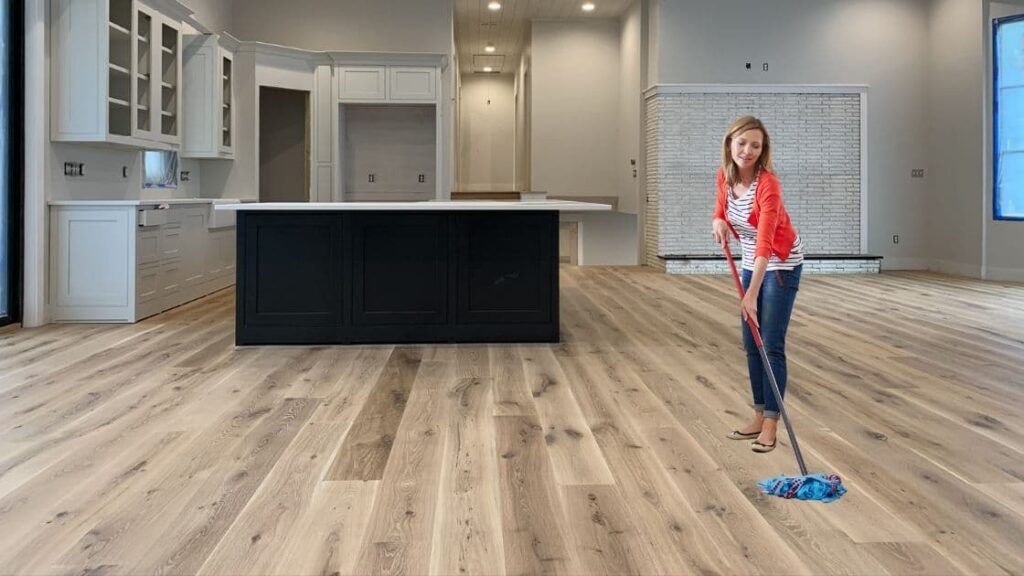

6. Trim Pet's Nails:
If you have furry friends at home, their nails can inadvertently scratch your wood floor. Keep your pet’s nails trimmed regularly to minimize the risk of scratches. Consider using nail caps or protective booties to provide an additional layer of defense. Additionally, place a pet-friendly mat near their food and water bowls to catch any spills or drips that could damage the floor. You can read more about protecting your floor from pets in our article “Hardwood Flooring and Dogs”


7. Protect from Sunlight:
Excessive exposure to sunlight can cause your wood floor to fade and become more susceptible to scratches. Install curtains, blinds, or window films to block out direct sunlight during peak hours. If you notice significant fading or discoloration in certain areas, rearrange furniture or use area rugs to create a more balanced look and protect the exposed floor.
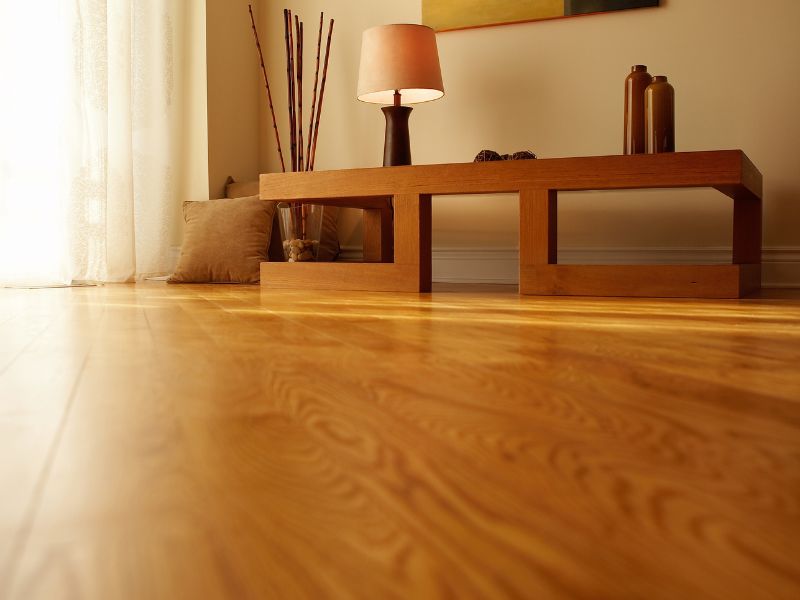

Protecting your wood floor from scratches requires a proactive approach and a combination of preventive measures. By choosing the appropriate finish, using furniture pads, employing area rugs, implementing a “no shoes” policy, practicing regular cleaning and maintenance, trimming pet’s nails, and shielding your floor from sunlight, you can significantly reduce the risk of scratches and keep your wood floor looking beautiful for years to come. Remember, a little extra effort today can go a long way in preserving the elegance and longevity of your wood flooring investment.



